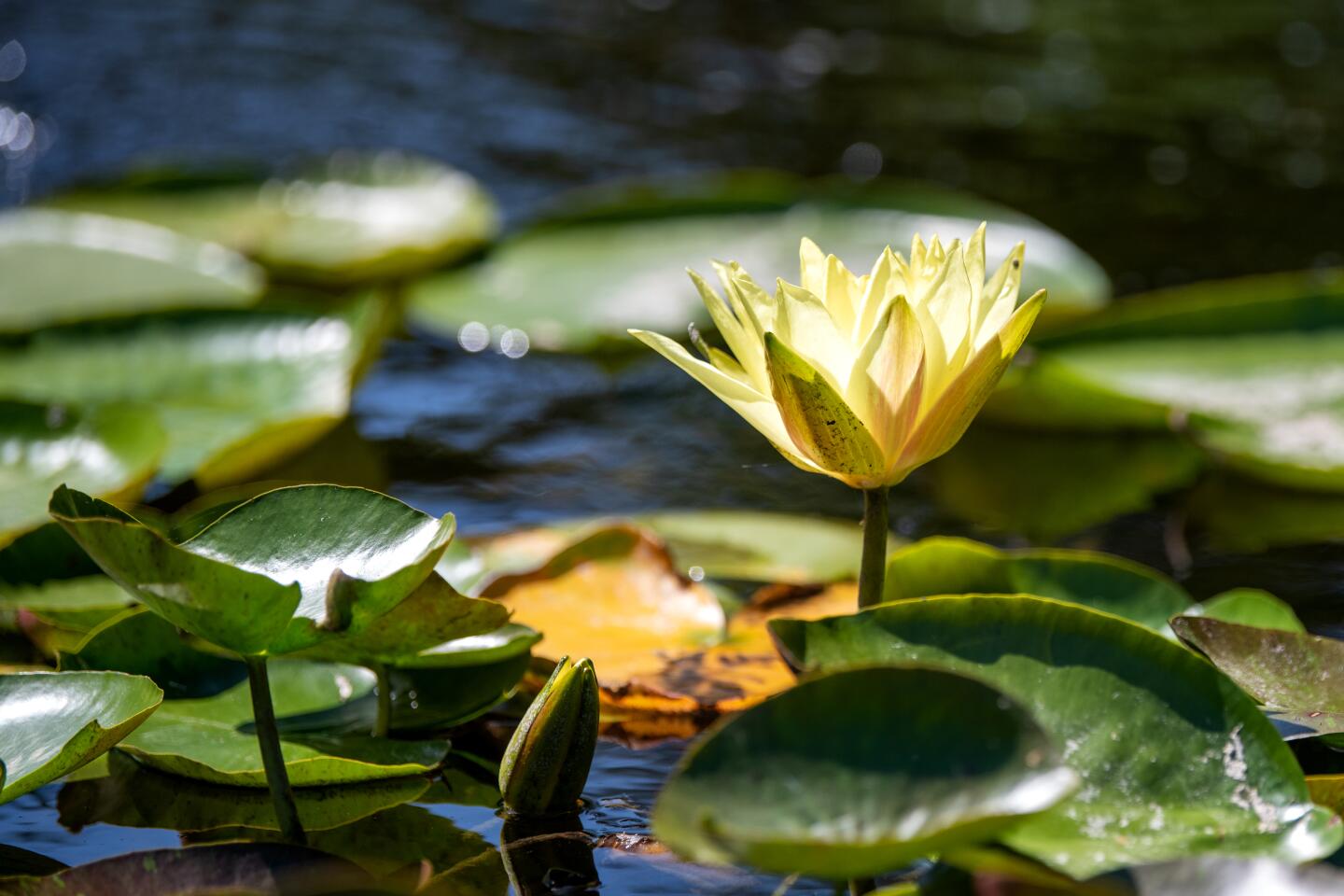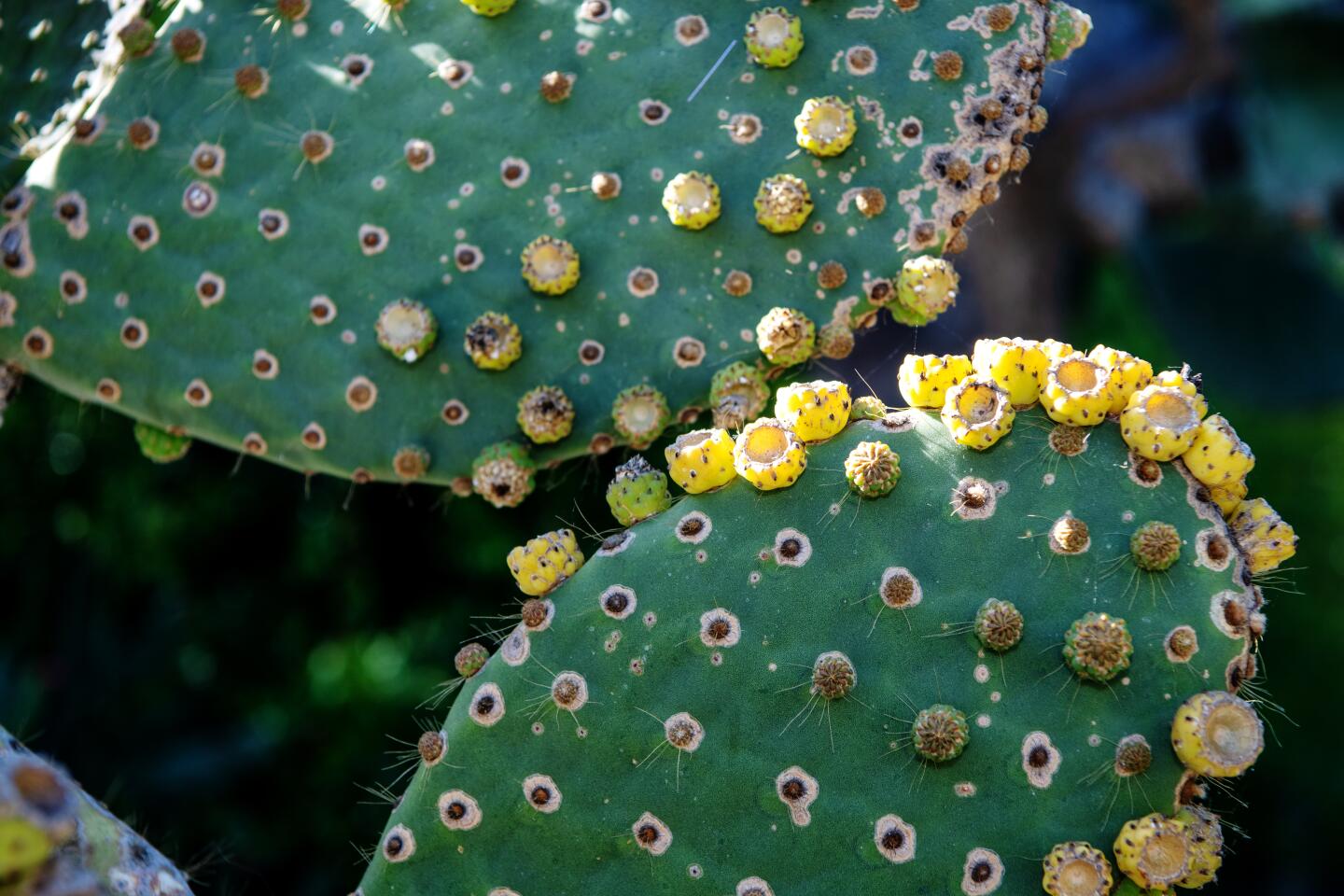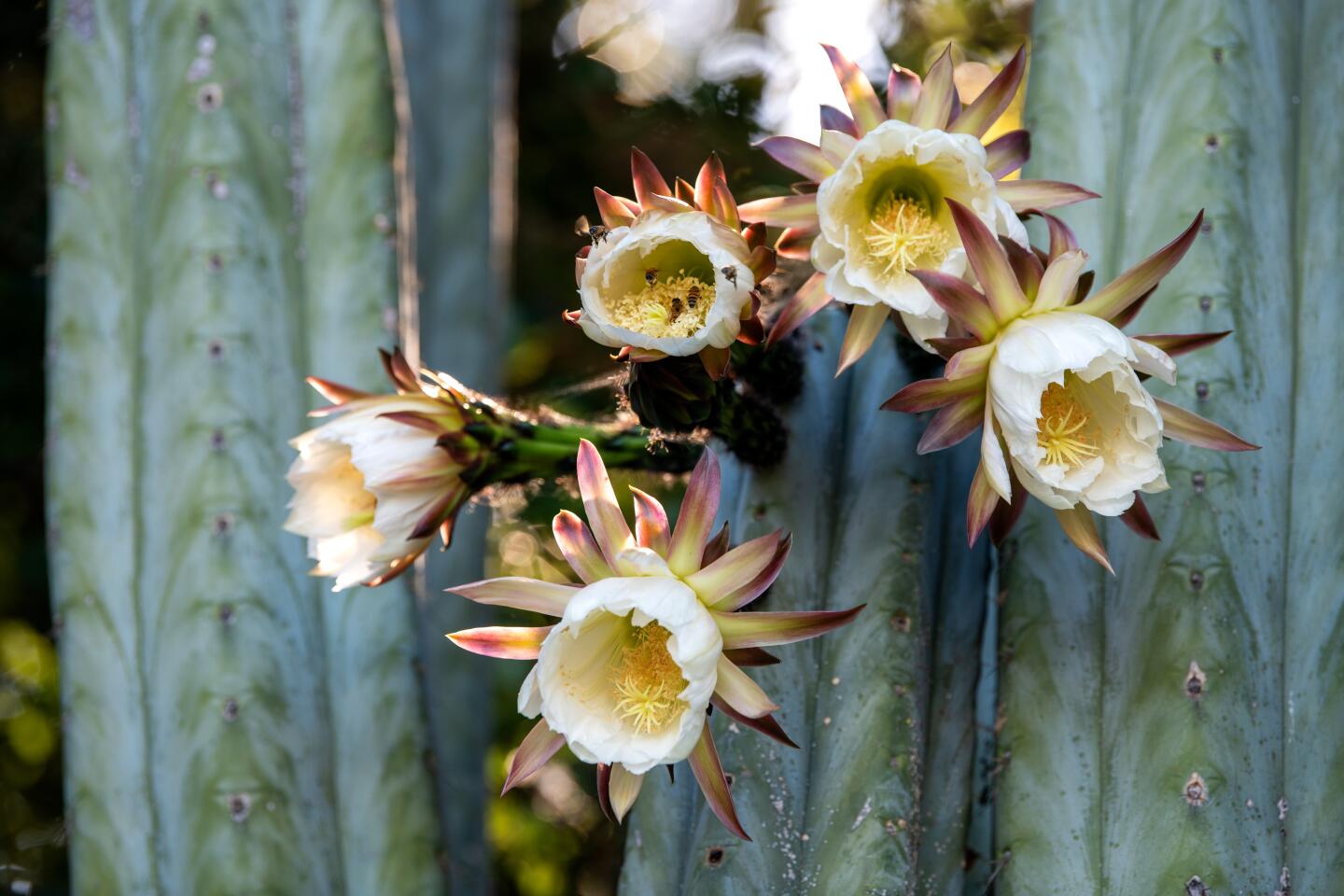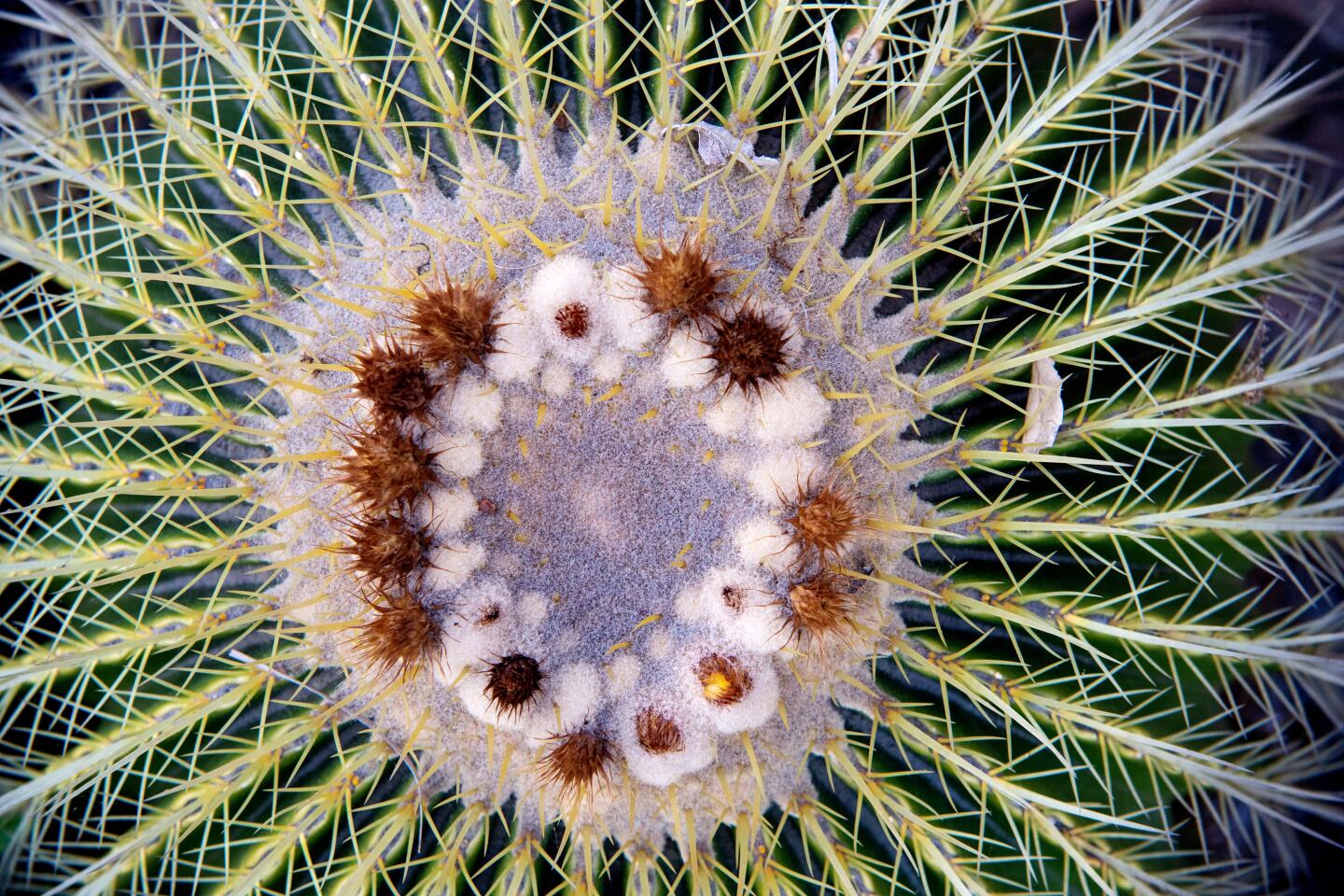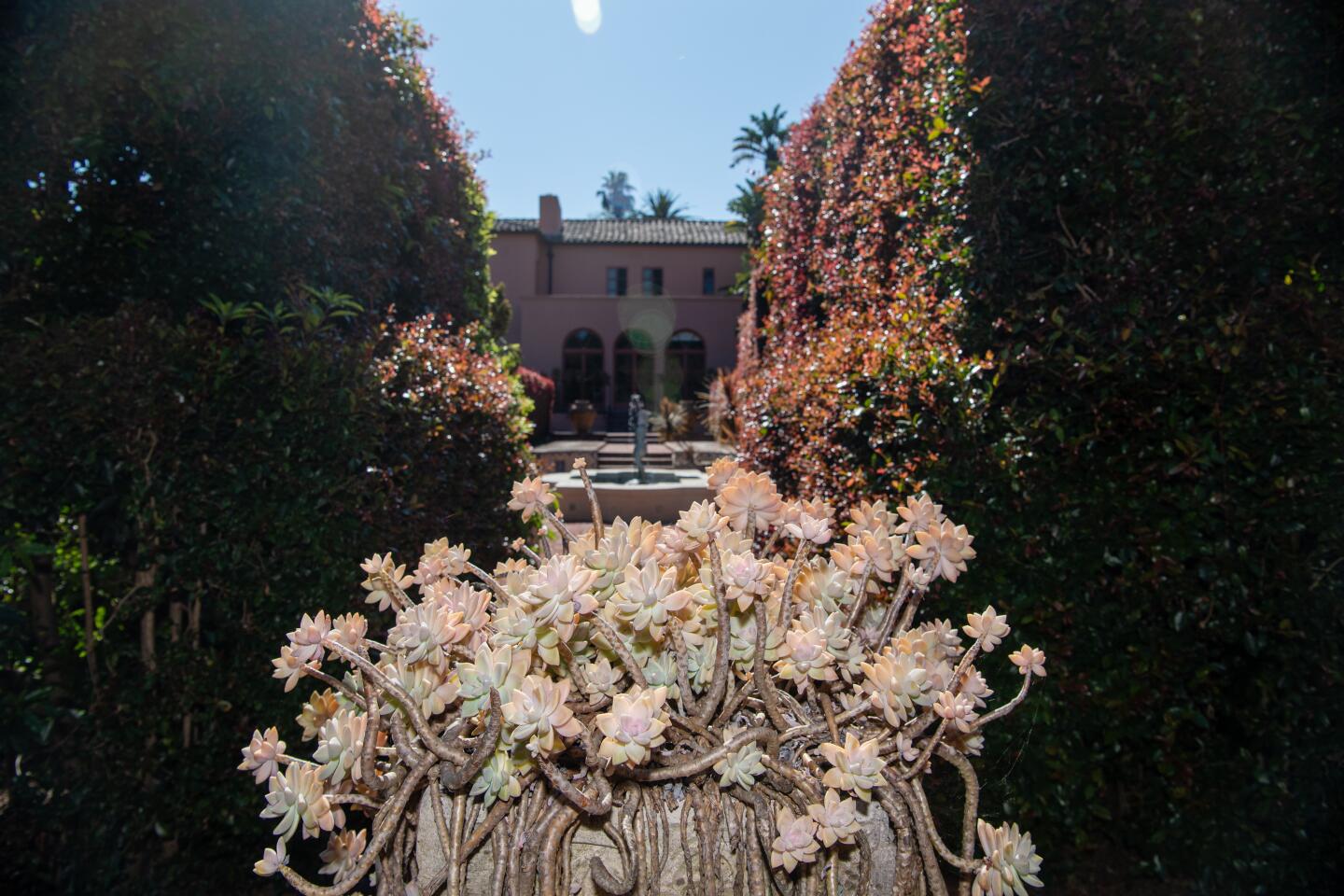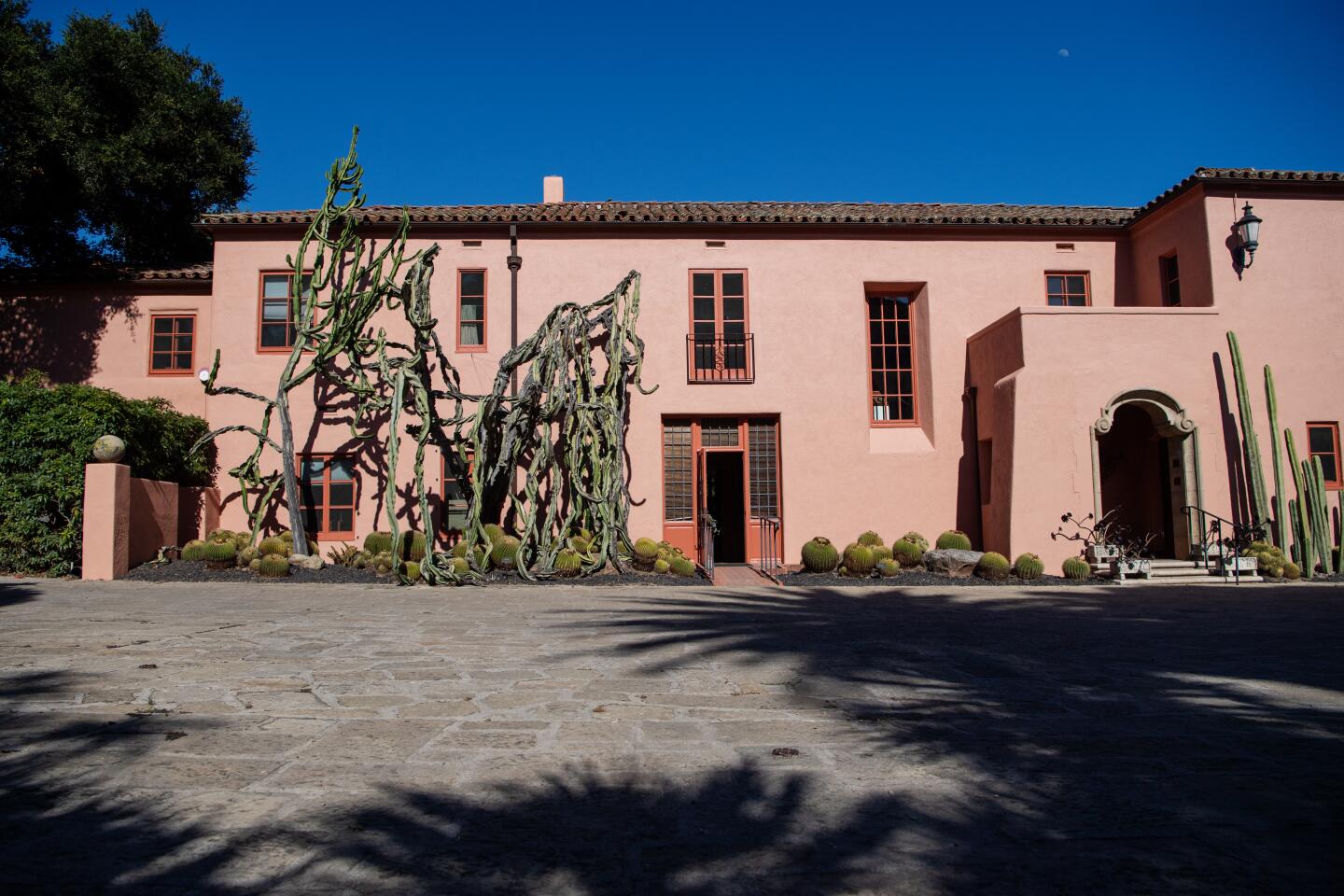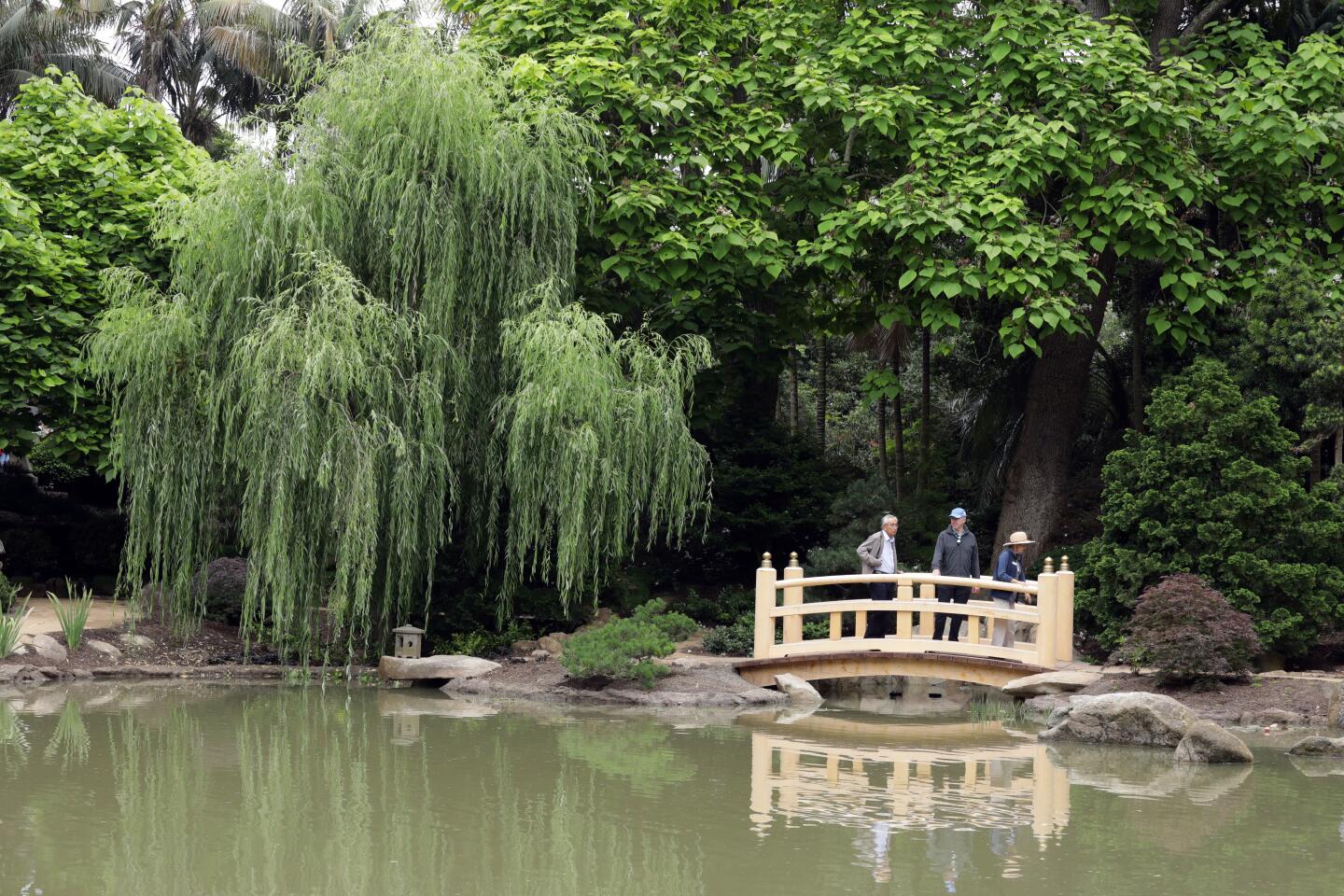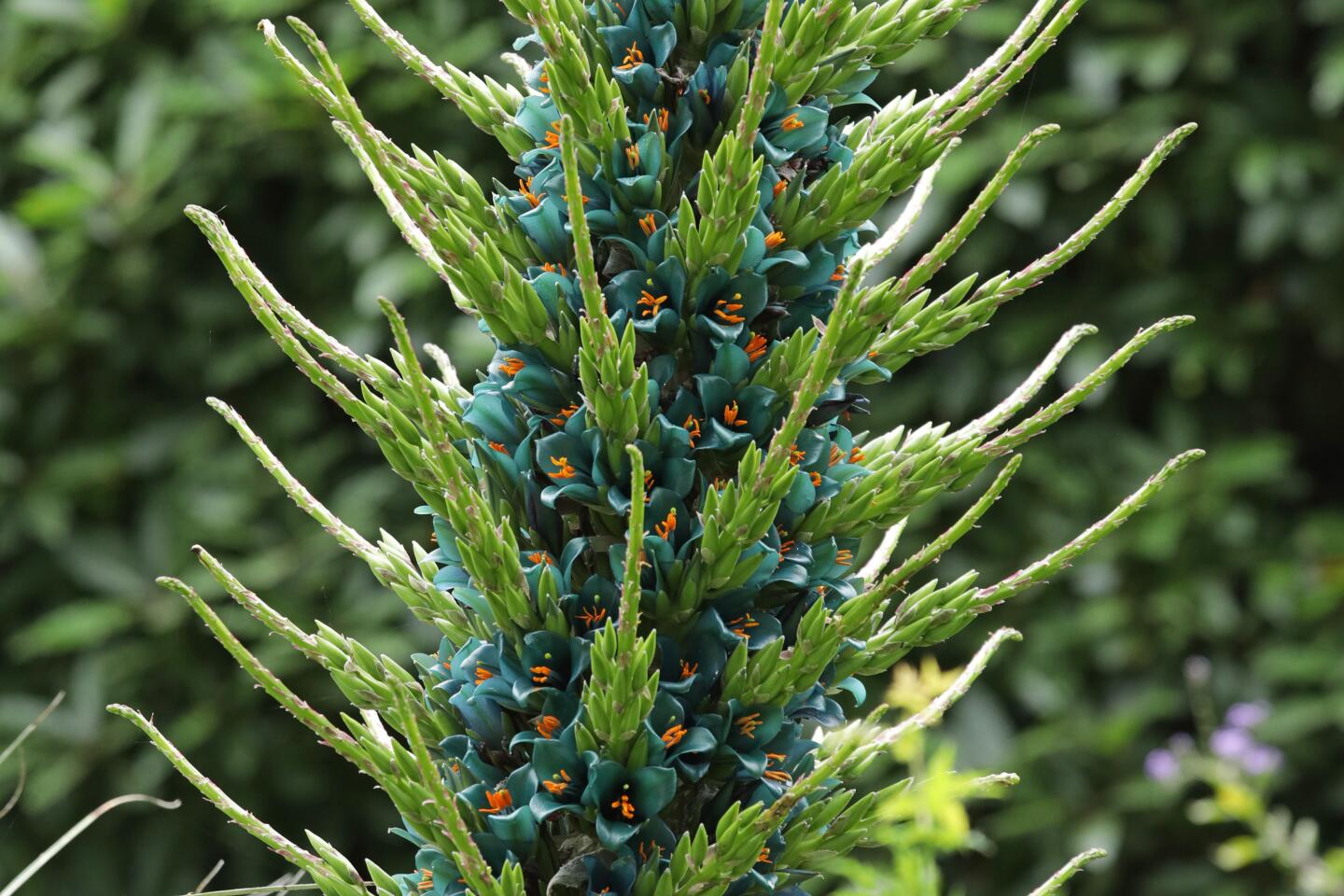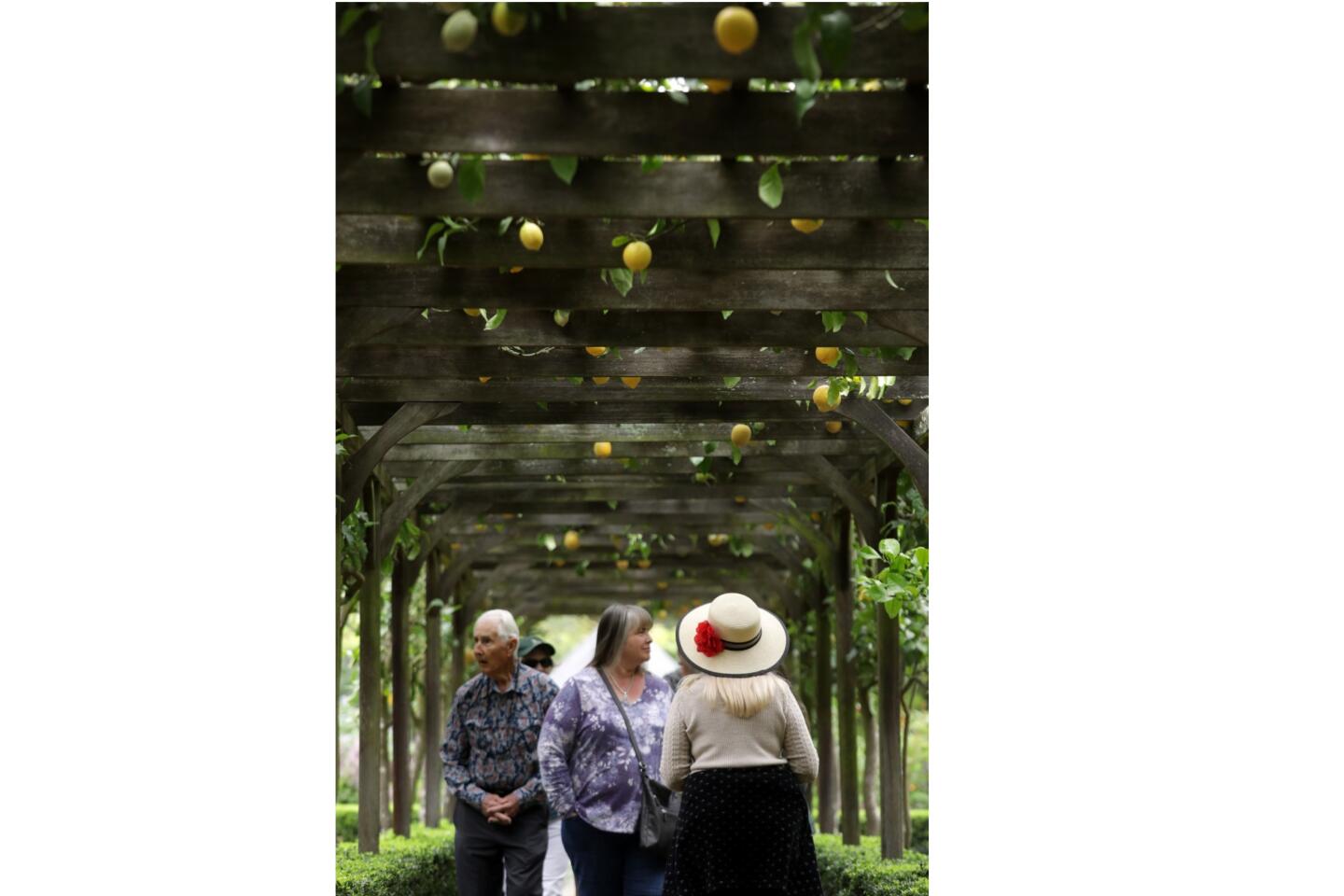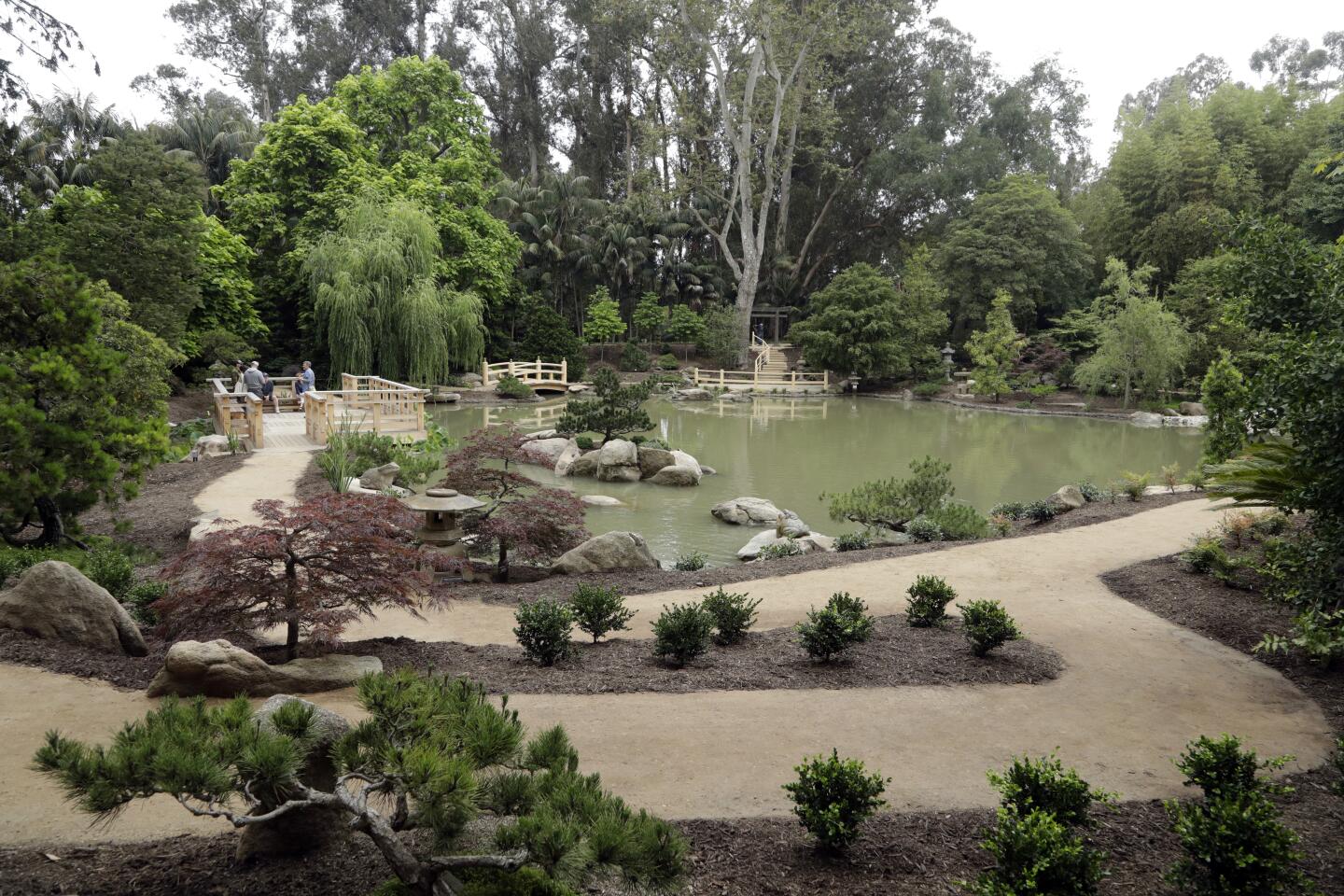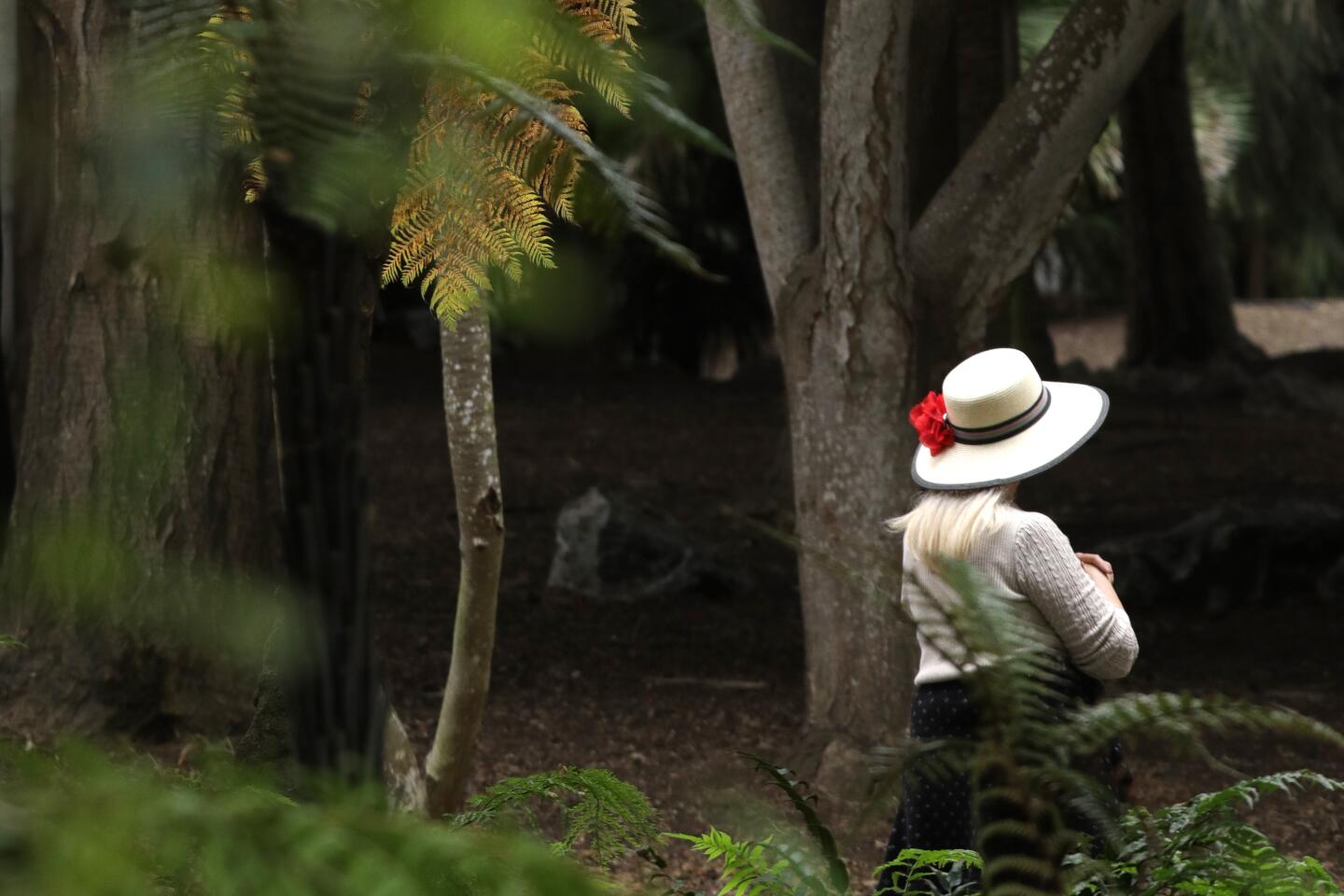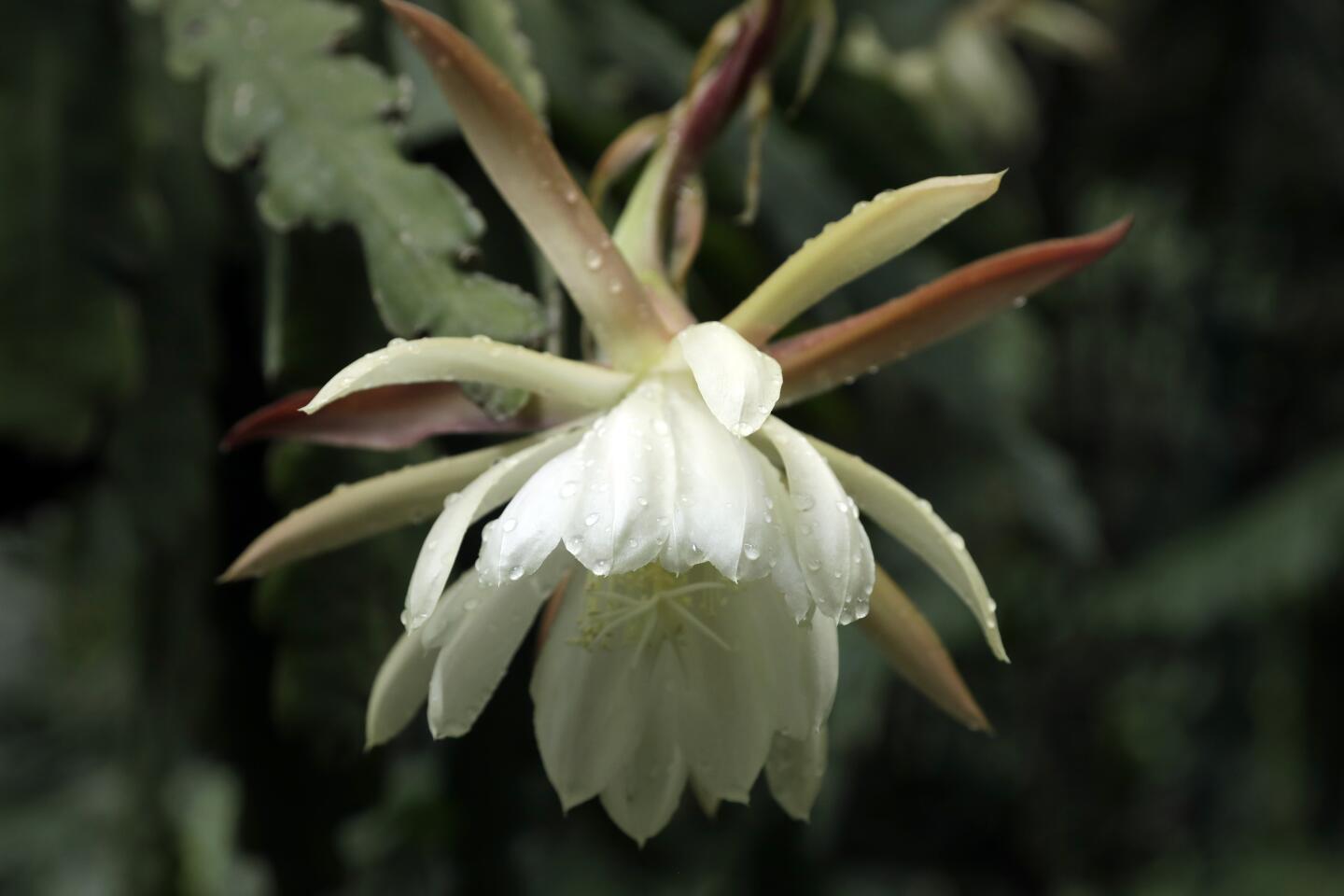Beloved Japanese garden reopens at Lotusland in Montecito — but good luck getting in
It all started in 2008. The koi pond in the Japanese garden at Lotusland, the spectacular Montecito estate often cited as one of the must-see gardens of the world, had grown so murky that one wag described it as “a bowl of turkey gravy.”
Newly hired Lotusland chief executive Gwen Stauffer had a solution, but she knew draining the pond, lining the bottom and installing a biofilter would disrupt operations at the landmark gardens. Still, she thought: How hard could it be?
As any homeowner knows, however, one improvement project leads to another. Soon the renovation ranged beyond the koi pond to include updating the Japanese garden with accessible footpaths and, eventually, building originally planned but never realized landscape elements such as a lotus-viewing deck and altogether new features like an enclosure of evergreen cryptomeria trees.
But then came the deadly Thomas wildfire in 2017. And mudslides in 2018. And the heavy rains that brought not one but two more emergency evacuations to the area, the posh enclave of celebrity homeowners such as Oprah Winfrey and Ellen DeGeneres.
With seemingly everything, including the weather, conspiring against her efforts, Stauffer sometimes wondered if she’d ever see an end to the renovations begun so long ago. “One of the darkest moments was the debris flow,” she recalls. “Everyone’s life here just stopped.”
Now, after 11 years and $6 million, Lotusland has finally reopened its beloved Japanese garden.
Since mid-June, visitors have been able to view both lotus and koi up close from the all-new deck over the glassy pond. Patrons using walkers and wheelchairs can explore via a network of Americans With Disabilities Act-compliant bridges, walkways and steps. Other enhancements, such as a miwatasu (a scenic overlook) and karesansui (a dry landscape evoking water), offer fresh ways to experience the placid scene.
“This has always been a traditional Japanese stroll garden where the intent was to leave chaos behind and enter a place of peace and tranquility,” Stauffer says. “We wanted people to be able to be present, meditate and connect with nature. Now they can do that.”
Lotusland is holding its annual fundraiser this weekend to celebrate the long-awaited reopening, but the renovation won’t make it any easier for visitors to get in for a tour.
Tickets remain a prized commodity, thanks to a long-standing conditional-use permit that restricts parking and limits admission to only 15,000 lucky visitors a year.
Lotusland is the legacy of Ganna Walska, an eccentric Polish-born opera singer who had six husbands but whose passion for plants outlasted them all.
The property had been the nursery of pioneering horticulturist Ralph Kinton Stevens in the late 1880s and thereafter belonged to several private owners.
When Walska — Lotusland staff still refer to her as “Madame” — bought it in 1941, she began assembling outdoor tableaux, each packed with primordial-looking cycads, prickly cactuses, sky-scraping palms, blue agaves or other exotic flora.
Renowned landscape architects Lockwood de Forest and Ralph Tallant Stevens, son of the garden’s original horticulturist, were among Walska’s early collaborators. Other locals helped create the Japanese garden in the 1960s, including stonemason Oswald Da Ros and garden designer Frank Fujii, whose father, Kintsuchi Fujii, had designed the celebrated prewar Storrier Stearns Japanese Garden in Pasadena. Until their recent deaths, both provided valuable firsthand knowledge of giving shape to Madame’s vision.
Walska died in 1984, leaving 37 acres to a foundation that opened the grounds to the public in 1993. Over the past quarter-century, visitors have consistently rated the Japanese garden as their favorite part of Lotusland. At 1.5 acres, it’s the largest of the themed landscapes and, given its multiple waterworks, the most complex.
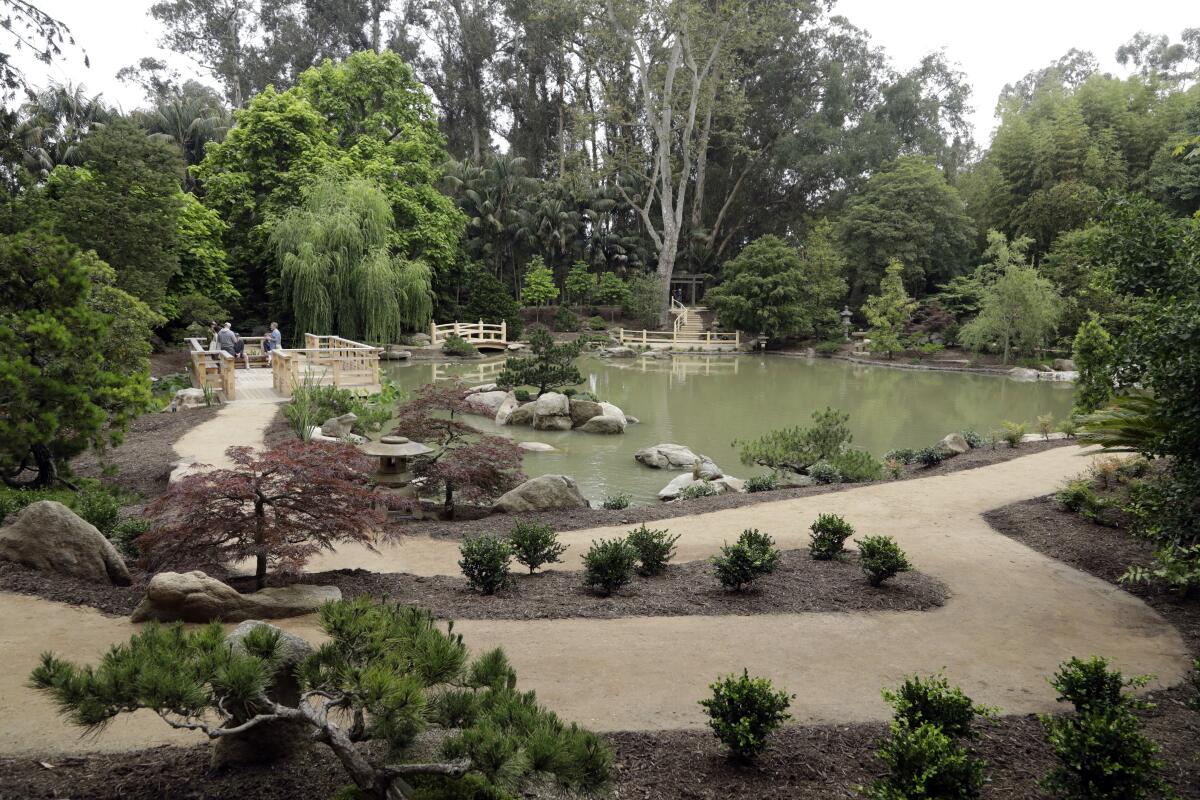
Improving the garden without altering its essential character posed a multifaceted challenge. Stauffer entrusted the task to local landscape architect Derrik Eichelberger of Arcadia Studio, who specializes in historic restorations like Santa Barbara’s Valle Verde, and Malibu landscape architect Paul Comstock of Comstock Landscape Architecture, who dreamed up the landscaping at many Disney theme parks, including those throughout Asia.
Together with Stauffer, Eichelberger and Comstock choreographed each aspect of the renovation like a military operation, cataloging the location and position of every tree, plant and boulder. “We labeled everything and took photographs,” Stauffer says. “That inventory was our bible for how to put things back together.”
Before the pond was drained, the koi, which numbered only 20 by the fall of 2017, were transferred to a small water feature in the cycad garden. More than 30 vintage stone lanterns were moved out of harm’s way. About 60 trees — Japanese maples, camellias and traditional niwaki-pruned pines, some of them 80 years old — were dug up, boxed and also set aside.
But a month after excavation started that November, the Thomas fire broke out, forcing a three-week evacuation. In January 2018, torrential downpours caused a devastating debris flow a block away, prompting another three-week work stoppage. The twin disasters closed roads, cut services, sidelined workers and diverted all available equipment and manpower to recovery efforts. Two more rain-related evacuations led to further delays before digging — and fundraising — could resume.
The pond would prove to be particularly problematic.
Crayfish introduced decades earlier had decimated the lotus, and catfish deployed to control the crayfish had only made the hungry crustaceans burrow into the clay bottom. The pond took 10 months to dry out and was so unstable afterward that three feet of clay had to be hauled out and replaced with new soil, slowing progress again.
Anaheim-based Outside the Lines installed a liner, first putting down a layer of felt, then a thick PVC shell that was topped with reinforced concrete and painted to resemble mud. Complicating matters was the coordination of the crane and other heavy machinery required to relocate huge boulders and trees.
“Staging was tricky. It was hard to have everyone working in such a tight space because we couldn’t drive on the pond liner,” Eichelberger says. “We could work on only a section at a time.”
While regrading the sloping sides of the bowl-shaped site for greater accessibility, earth-moving equipment also hit several snags. Tree roots in unexpected places halted crews until alternative routes could be figured out. “We had to redesign paths on the fly,” Eichelberger says. “It was a delicate dance.”
Elsewhere, bridges and stairways were carefully dismantled and reconstructed, as was the rock waterfall that, astonishingly, had survived numerous earthquakes without mortar. Flagstone-paved gathering areas, like the new overlook and the landing just inside the original torii gate entrance, were laid out and furnished with benches fashioned from repurposed stone steps.
Lanterns and trees were returned to their proper places.
And since the pond was refilled last month, the koi — which roughly doubled in number during the renovation — have been transferred back, a handful at a time, to acclimate to their permanent habitat.
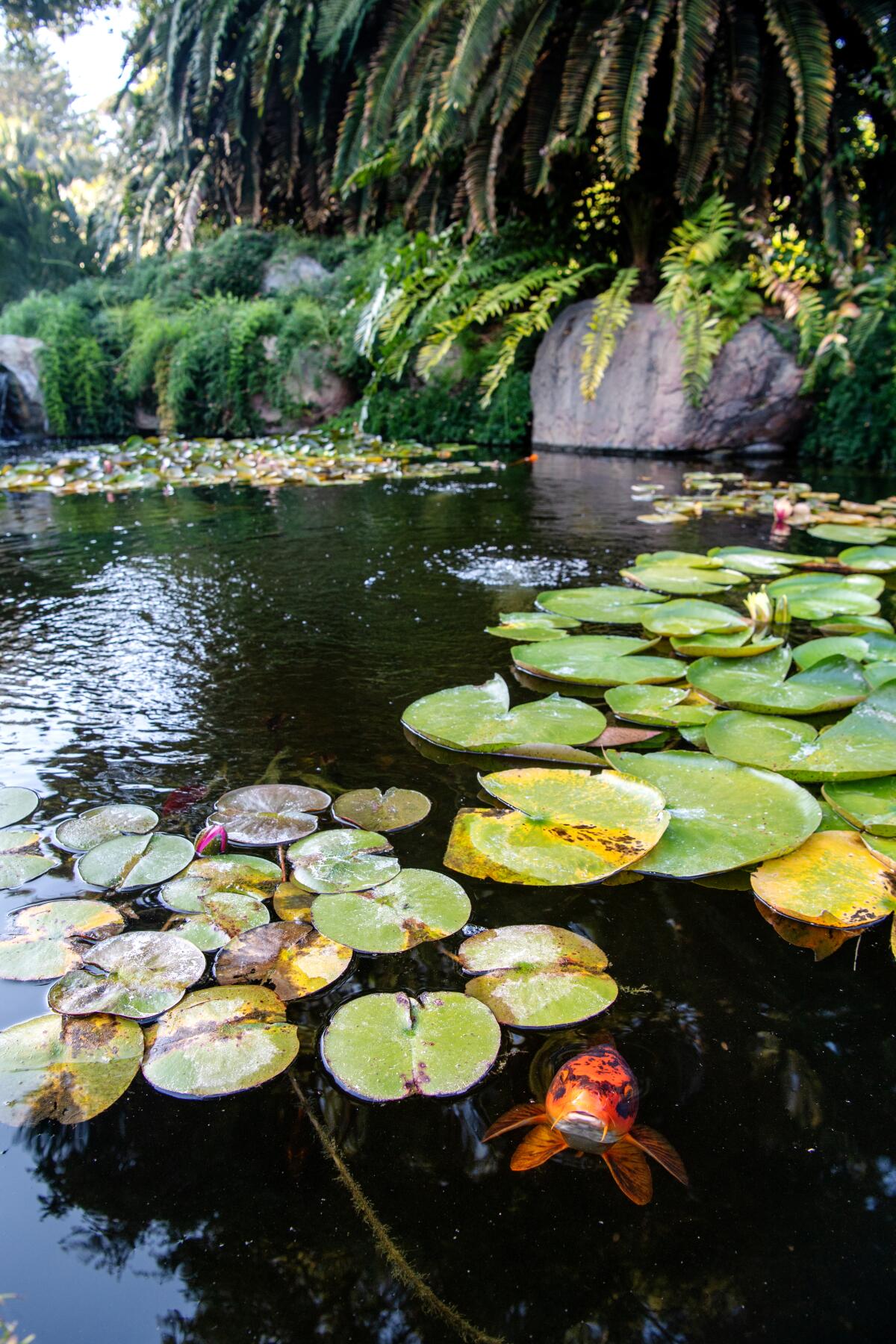
Still to come are finishing touches on a few upper paths and construction of a brand-new Japanese-style pavilion that, once it’s built, will be planted with wisteria.
The attention to detail lavished on the Japanese garden’s man-made infrastructure extended to its botanical framework as well. Eichelberger and Comstock traveled to nurseries in the Pacific Northwest in search of trees that would complement the wide range of existing pines, junipers, cedars and other conifers that lend Asian ambiance.
“Derrik and I saw areas where there was the potential to add new dimensions,” Comstock says of the understory absent beneath towering araucaria trees. Now visitors will see several Moonrise Japanese maples filling the gaps, their lime-green summer foliage turning butter yellow come fall. In springtime, Akebono cherry trees and Chinese fringe trees will explode in a profusion of pink and white blooms, respectively.
Dawn redwoods, once believed to be extinct but later found growing in their native China, also wound up in the mix. Unlike other redwoods, dawn redwoods have leaves that are deciduous rather than evergreen — a subtle reminder that Lotusland is more than just a popular tourist destination.
“These trees bring us back to the beauty and diversity of Mother Nature, all of which can be grown in this unique location,” Comstock says. “The garden is not only aesthetically pleasing and enjoyable. This is a living genetic museum of plant material from all over the world.”
Just as Madame envisioned it.
Visiting Lotusland
Lotusland is in a residential neighborhood in Montecito, where Santa Barbara County regulations restrict the venue to 15,000 visitors a year. Two-hour, docent-led tours are available twice a day Wednesday through Saturday from mid-February to mid-November. Reservations and tickets are musts and should be arranged well in advance. For more information, see lotusland.org.
More to Read
Sign up for our L.A. Times Plants newsletter
At the start of each month, get a roundup of upcoming plant-related activities and events in Southern California, along with links to tips and articles you may have missed.
You may occasionally receive promotional content from the Los Angeles Times.

